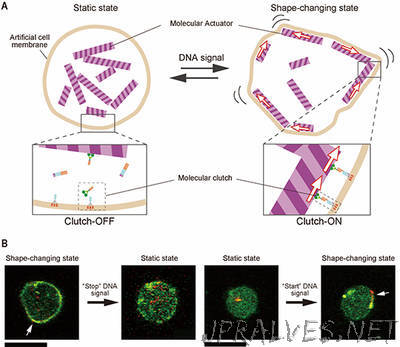
“A research group at Tohoku University and Japan Advanced Institute of Science and Technology has developed a molecular robot consisting of biomolecules, such as DNA and protein. The molecular robot was developed by integrating molecular machines into an artificial cell membrane. It can start and stop its shape-changing function in response to a specific DNA signal. This is the first time that a molecular robotic system has been able to recognize signals and control its shape-changing function. What this means is that molecular robots could, in the near future, function in a way similar to living organisms. Using sophisticated biomolecules such as DNA and proteins, living organisms perform important functions. For example, white blood cells can chase bacteria by sensing chemical signals and migrating toward the target. In the field of chemistry and synthetic biology, elemental technologies for making various molecular machines, such as sensors, processors and actuators, are created using biomolecules.”
